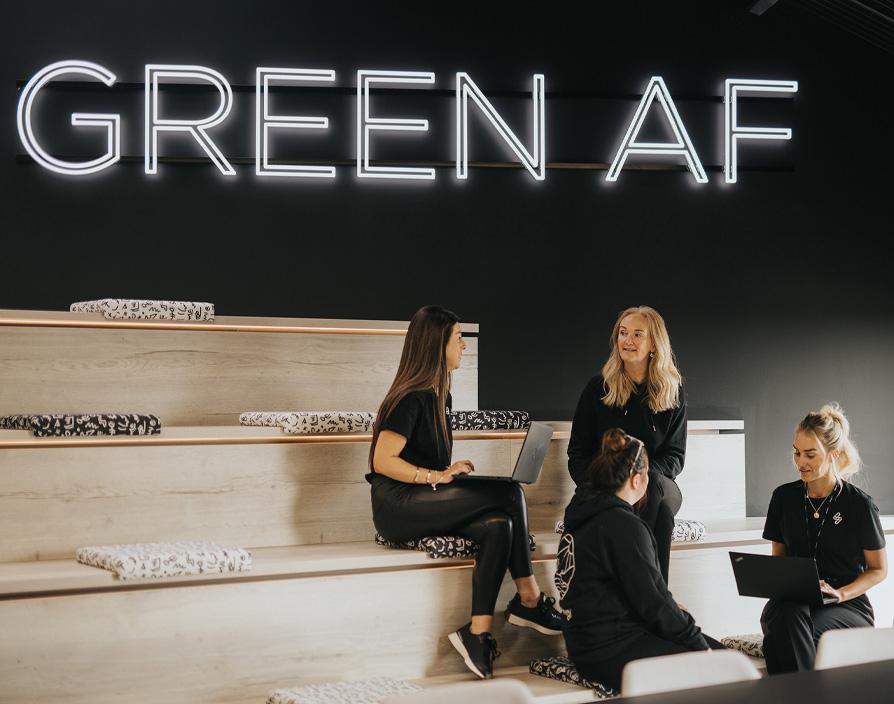In a world of increasing corporate competitiveness, incremental innovation, similar services and replicable products, your brand, your market positioning and your company culture are often the only way to achieve powerful cut-through and recognisable differentiation.
Think about your smartphone as an example. While Android vs IOS might seem like a divisive question – almost enough to lose friends about, they’re both pretty similar, right? Regardless of overall design or exacting capabilities, when it comes down to the detail, both operating systems allow the user to make calls, send texts, take pictures and boast an extensive app library.
You can use both to order a taxi, book a restaurant, check your bank balance, update your social media feeds, buy your weekly grocery shop, check your train timetable, read the latest news, or even sell your car. To be fair, I’m not sure that we could really live without smartphones. But, in practicality terms, the two systems are surprisingly similar – if not almost identical.
So, what really sets them apart? Well, in short, branding. It’s not about capability per say, it’s all about which operating system you personally resonate with. Forget your handset for a minute, are you an IOS person, or an Android person? What makes you feel more comfortable? What do your friends and family use? What brand values do you perceive as more important? All this for choosing smartphone software.
But Jordan, we’re talking about corporate culture, not branding! True, true, but maybe the two ideas are more closely related than many may think?
Are your brand and culture really that different?
Creating a brand is all about a great logo, beautiful colour scheme, fancy website and a great brochure, right? Well that’s a good start I suppose, but it’s safe to say that a brand is so much more – it’s about your journey, your goals, your personality and your values. Most of your brand is nothing to do with the visual, visible elements.
You can’t just make a brand, you have to grow one. It takes years to get it right, even longer to change it and, frustratingly, can be devalued in seconds if you make the wrong move. It’s the single most important asset that your business owns, but is completely intangible.
Getting it right is key, but getting it wrong has consequences. After all, if a brand isn’t absolutely genuine, the market simply won’t buy into it. Consider Shell’s recently banned adverts about its domestic renewable electricity offer – cool branding, a really relatable message, but just not believable. Shell is about as synonymous with global oil operations as you can get – sorry, guys, we just don’t believe that you’ve changed overnight.
So how, therefore, do you create a genuine brand? In my opinion, it all stems from your culture – your beliefs, your behaviours, your values and the way you do business. If your brand and culture mirror each other, it’s the perfect partnership. If they differ, its pretty much game over.

Where does corporate culture come from?
A lot hangs on culture, but fortunately for every entrepreneur, it naturally comes from the top. If culture is all about ‘how’ you operate, it’s obvious that – for a start-up team – your culture is all about you. Your values, your beliefs, the way you approach problems, the way you treat your customers and your team.
When we founded myenergi, our culture was inspired by our innovation, our enthusiasm, our dogged determination and our belief in a better future. We didn’t want to make products, we wanted to help consumers to do things differently – more efficiently, more sustainably. We almost absent mindedly created a team culture that mirrored this perfectly. Our staff shared these beliefs, these values, these approaches.
As the business grew, this culture stuck. Our team were part of the journey and fiercely proud of this. It was a culture of trust, of entrepreneurialism, of kindness. The team knew that they were valued and they understood exactly how they were contributing. Our retention rates reflected this – people stood by us.
This is when the importance of culture hit me. It almost didn’t matter about our brand. I could have created a completely different look and feel – different colours, a different logo, different key messages and different product proof points – but, if the culture didn’t reflect it, all the effort and investment would have been worthless.
You try faking a ‘quality’ brand if your team are so disengaged that the products are put together badly. You try faking a ‘sustainable’ brand if your team know that you’re really digging up oil and contributing to climate change. You try creating a ‘family’ brand without offering remote working and flex options. It simply doesn’t click.
Culture, it seemed, was key to our success. We were creating advocates, we were building a tribe, we were seen as something new and different in the sector – not a faceless company, but a brand driven by culture.
How do you retain culture in a growing company
Culture is easy if you’re a start-up. If you believe in your convictions, show pride and passion in your day-to-day and you’re a genuinely stand-up sort of person, that’s by proxy the brand and the culture that you start to build. When it comes to growing your team, you can either empower them or constrain them. When it comes to inspiring your team, you can either be a leader, or a dictator.
But what about when the whole thing gets bigger. What about internationalisation? What about multiple offices? That’s when culture gets a bit more tricky, when you start to see divides, when other personalities begin to have their own influence. At some point in your journey, your culture will begin to become diluted – if you’re not careful, it could undermine your work.
In my opinion, retaining culture is all about communication. It’s about setting the standards early on, being open, honest and transparent, it’s about inspiring people to share your beliefs and it’s about empowering your team to convey your culture on your behalf.
If you visit our head office in Stallingborough, our culture hits you right when you walk through the door. Yes, it’s green, it’s nicely branded, it’s sustainable and it’s futuristic, but it’s also a part of mine and Lee’s personality. There’s a massive neon sign – “What would Sut-dog do?” – getting our team to think in the ‘myenergi way’. There’s animal print wallpaper, there’s motivational quotes and its completely open plan – sharing ideas, sharing advice, working together.
The first room you walk into is the canteen. Make yourself a coffee, talk to the team, embrace our personality right from the get-go. Need to pick your child up from school early? Just do it. We get that being chained to your desk isn’t realistic in 2023. Our staff parties? Like a big family get-together.
Regardless of our size, we remain true to our energetic, nimble, exciting start-up culture. We don’t take ourselves too seriously. We don’t believe in a rigid, formal way of doing things. We want people to be happy at work.
This culture becomes engrained in our team members from the moment they arrive for interview. This is us. It’s the myenergi way of doing things. It’s from the top down, but it’s relatable and enjoyable. It’s a culture that inspires. Most of all, it’s what has helped us to build one of the fastest-growing eco-smart tech companies in the world. You join our movement and you become an advocate.
Being true to ourselves
The business world is changing fast. Faster than it arguably ever has before. The companies that will be here for years to come are doing things right – they’re creating a better future for their staff and customers, they’re innovating continually and they’re motivated by more than just revenue.
Culture and brand is key to all of this. It’s about building something honest, having the proof points to back it up and having a team that follows in your footsteps. Some say that good culture should be a priority for good leaders. I say that a good culture is a sign of good leadership.
Share via:








































